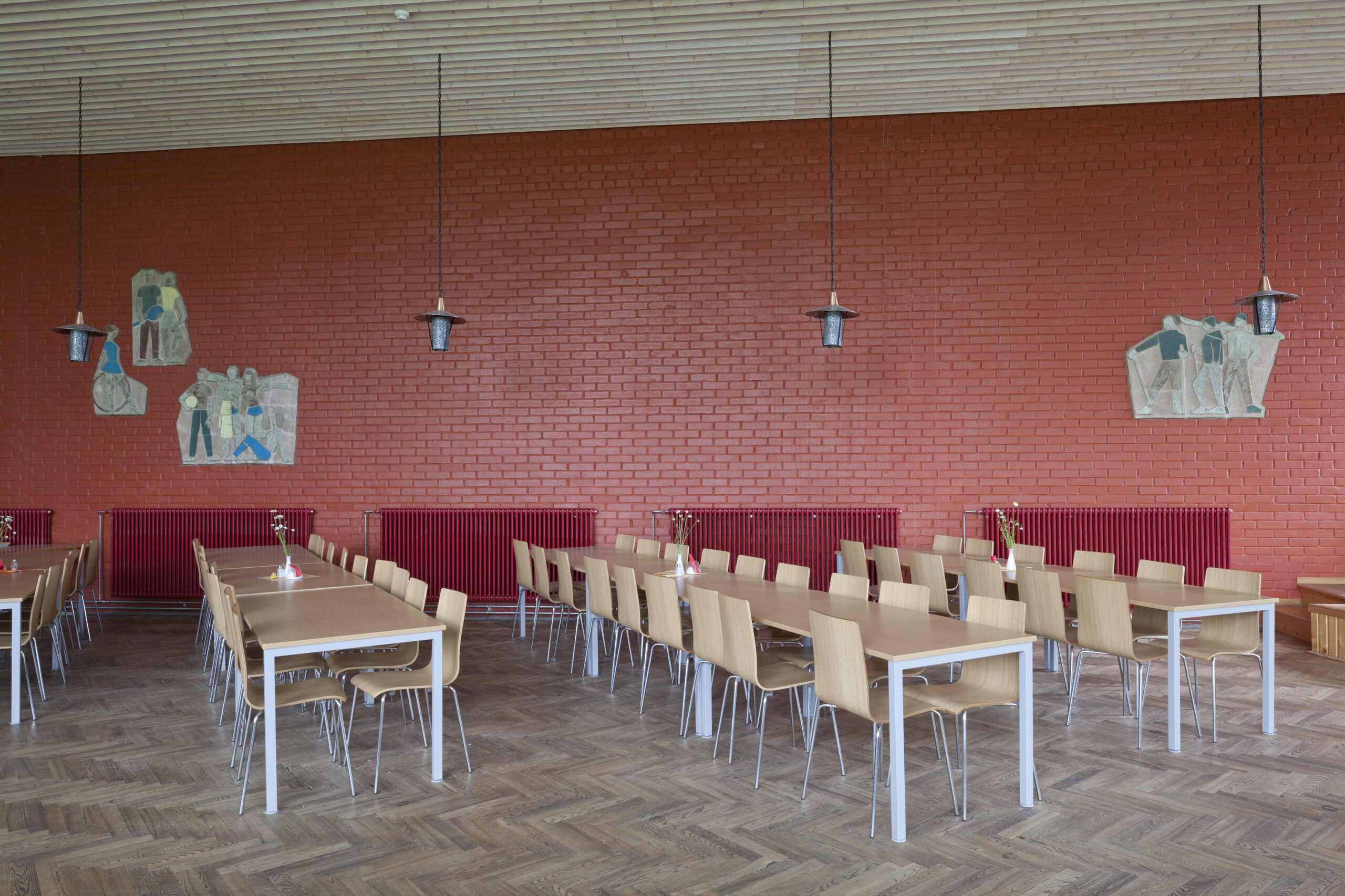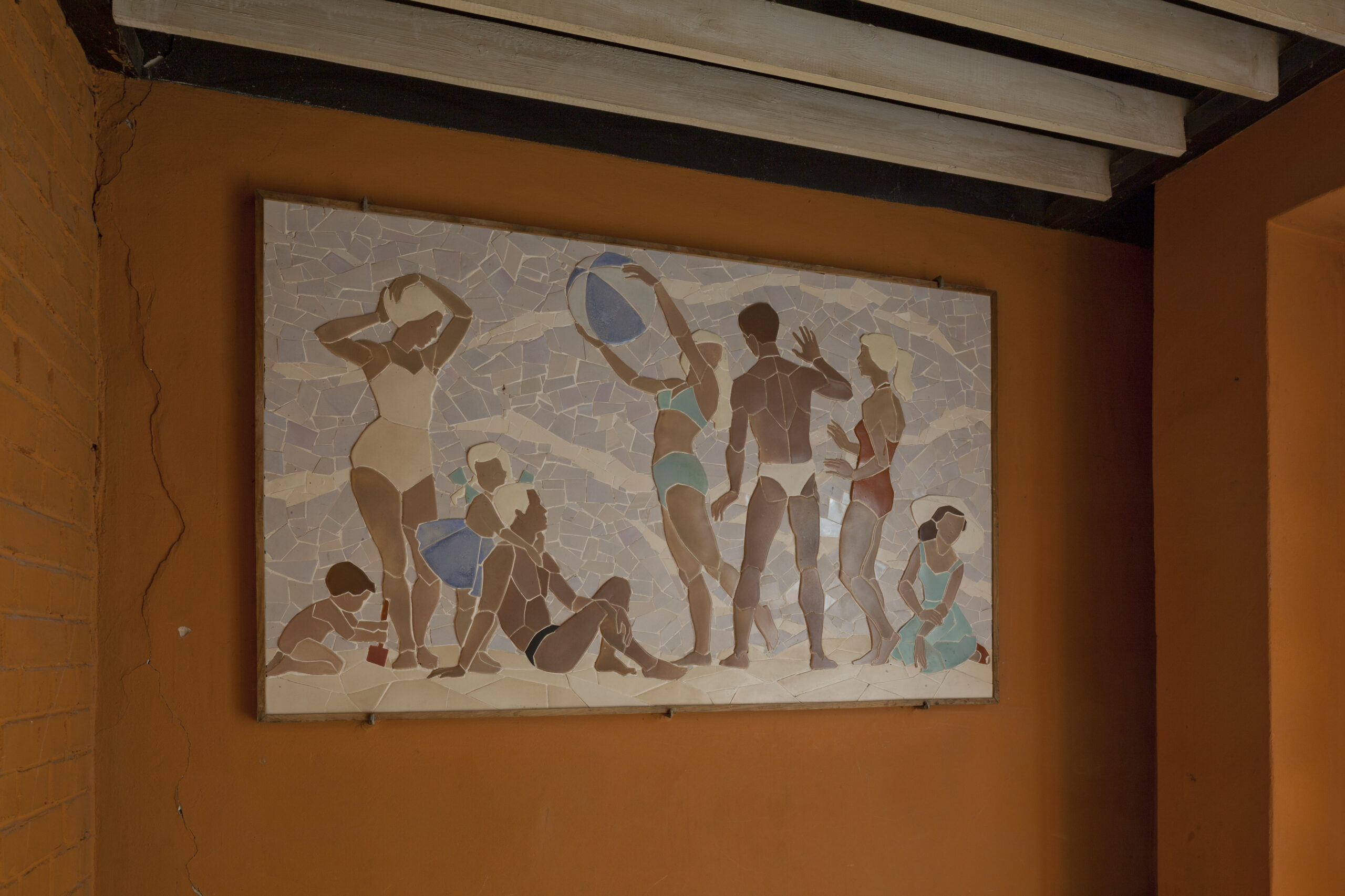Ceramic Pannels in the Conference and Catering Building of Kääriku Sports Centre
Approximate year of completion: 1962
Address: Valga County, Kääriku Village
Author unknown
Sport (four pannels in the dining hall) and Suvi (“Summer”, a pannel in the stairwell)
Ceramics
Cultural monument no. 30 434
The Kääriku Sports Centre (architects Uno Tölpus, Peeter Tarvas, 1962) of the University of Tartu was one of the first modern architecture building complexes, besides Pirita Lillepaviljon (an exhibition pavilion, architect Valve Pormeister, 1960), where a mellow and environmentally friendly approach was employed following the examples of modernist principles and the architecture of Nordic countries. In such approaches, the buildings were placed on a landscape, taking its specific nature into account, and thus preserving its greenery. In addition to taking the terrain into account, the architects attempted to connect the interior and exterior spaces, using large windows reaching from the floor to the ceiling. As is characteristic of so-called organic architecture, the cafeteria of the catering building is a flowing room, similar to the style of Alvar Aalto, with a beautiful view to the valley.
The ceramic pannels depicting cheery athletes and youths on holiday are some of the earliest examples of the realisation of Khrushchev’s Thaw art synthesis in Estonian SSR architecture. The pieces, although quite faded today, were initially abundantly polychromous, and the authors were most likely inspired by the Young Pioneer Palace opened in Moscow not long before, which set the “good taste” criteria and expectations for monumental-decorative arts for a whole decade. The ceramic pannels might have been created by a student at the Estonian Academy of Arts, but unfortunately their author has not been determined.
The Kääriku complex as a whole is under conservation, the artworks are listed as separate cultural monuments. In addition to good overall appearance, numerous original details have survived in the interior spaces, and it is a space that, owing to its rich history – among other people, Finnish President Urho Kekkonen went skiing there – vividly speaks of the life in Estonia during Khrushchev’s Thaw.
Gregor Taul








